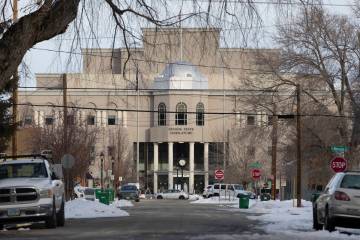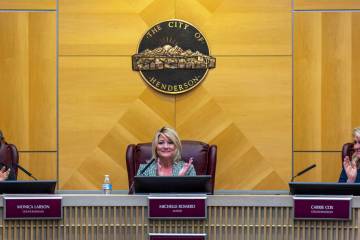EDITORIAL: Nevada Gov. Brian Sandoval’s budget blueprint will boost spending by double digits
Rest assured that at some point during the upcoming 2017 legislative session — likely in the initial hours or days — someone, somewhere will complain that the state’s budget blueprint fails to meet some perceived need.
It is at this point that a fiscally astute lawmaker should respond with a few salient facts.
First, Nevada’s real per capita income — that is the average income earned per person — fell by more than 14 percent between 2007 and 2015, from $31,698 to $27,220.
Next, the state’s real median family income — the figure that divides Nevada households into two equal parts, with half earning more and half less — dropped more than 12 percent over the same period, from $71,837 to $63,206.
And finally, Nevada’s median household income, a slightly different measurement than “family” income, suffered a similar fate, falling from $62,943 in 2007 to $52,431 in 2015, down almost 17 percent.
Meanwhile, under the budget plan that Gov. Brian Sandoval unveiled Tuesday night, state spending will hit a record $8.1 billion over the 2017-19 biennium, up 14.4 percent from the 2007-09 budget cycle and a whopping 21.6 percent higher than what lawmakers spent just two sessions ago.
While the incomes of working Nevadans have yet to return to pre-recession levels, the state is apparently doing quite nicely.
Spending on human services and K-12 education will hit record highs and state employees will receive comfortable raises. There’s also plenty of money to pay for massive growth in Medicaid, to cover a generous boost for higher education and to expand prisons. Then we have the millions for favored projects, particularly in northern Nevada.
Also notable in the budget proposal is what’s missing.
“Even after overcoming the effects of the recession,” noted a 2016 report by the Pew Charitable Trusts, “states face financial pressures that will shape budgets now and for years to come. A major issue for a number of states is how to cope with an accumulation of unfunded public pension and health-care liabilities.”
Yet the governor’s budget contains no plan to reform the state retirement system or to address its massive unfunded liability, one of the highest in the country, per capita.
Perhaps a few lawmakers will pick up the cause. But if inertia on this looming issue remains the preferred course of action among those in Carson City, there soon will come a time when there won’t be enough money in the entire state to dig taxpayers out of the abyss.

















